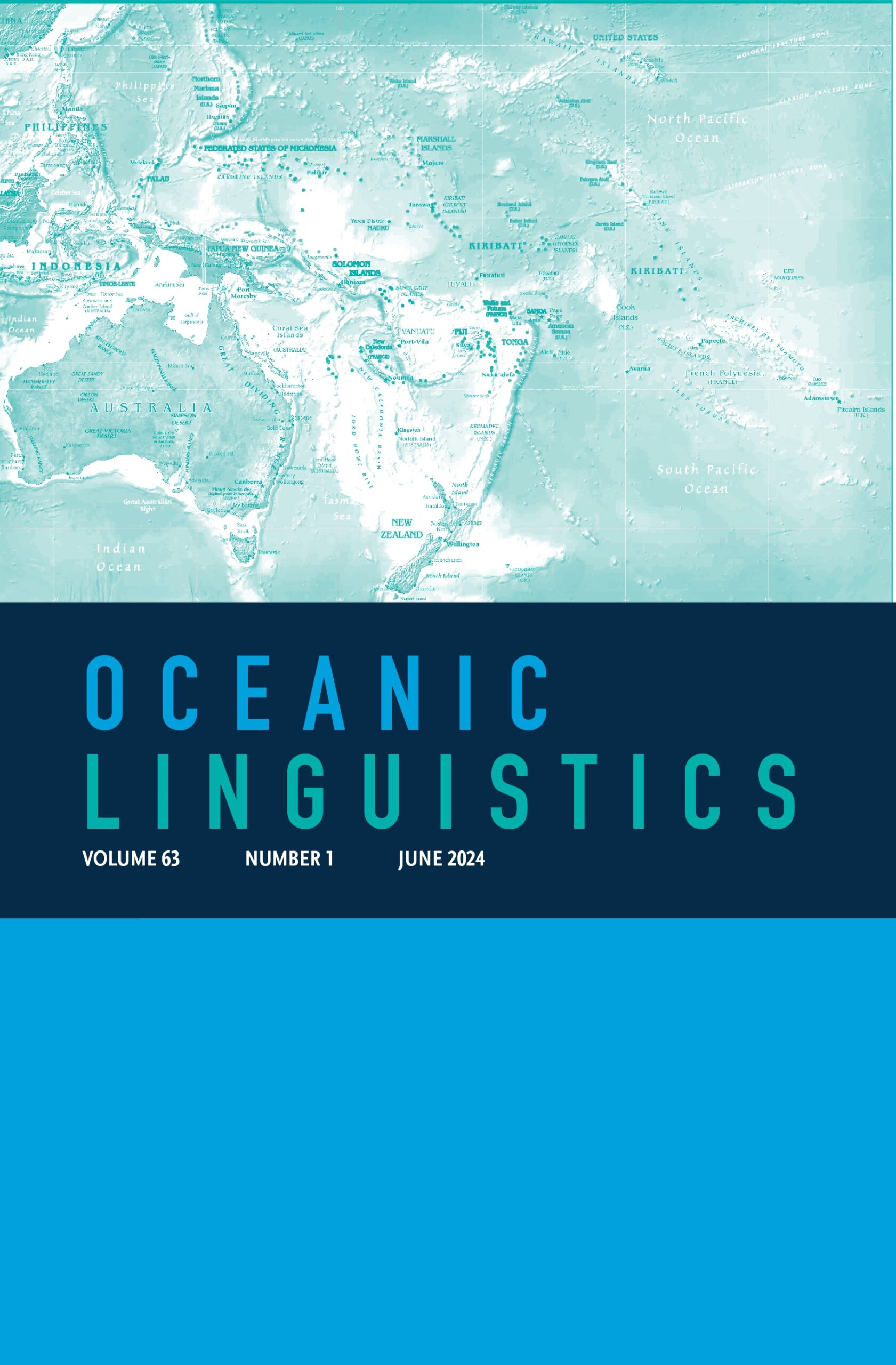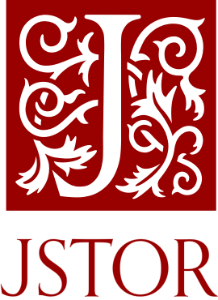PAYMENT
All prices are indicated in U.S. dollars. Canadian customers must include 5% GST (automatically included at checkout). All prices shown are exclusive of any taxes.
Payment must be included with all orders. We accept payment by U.S. dollar checks drawn on a U.S. bank and made payable to the University of Hawaii Press. We also accept payment by Visa or MasterCard. If paying by credit card please include the card number, expiration date, cardholder name and billing address. If you wish to pay by bank transfer, please contact us for bank details. No refunds will be made except for erroneous duplicate orders.
PRINT SUBSCRIPTIONS – GENERAL INFORMATION
Subscription Start
Print subscriptions start from the first issue of the calendar year and are effective for the entire volume year. Subscriptions may be entered retroactively. Unless otherwise requested, subscriptions will start with the current year’s volume.
Shipping / Postage
All prices shown include standard delivery in the U.S.A. Additional postage will be charged at checkout for print orders mailed outside the U.S.A. Priority Mail option at additional cost is available at checkout. Please contact customer service for other shipping options.
Single Issues / Back Issues
Single-issues of current print volumes may be ordered. Print issues older than two years are available in limited supply and may be purchased at a discounted rate. Please fill out a single-issue order form.
Bookstores/Classroom Use
Bulk-rate discounts for one-time print orders are 20% on 10-19 copies and 30% on 20 or more copies. Postage charges are NOT discountable. All sales are final, we do not accept return of journal issues. Please contact customer service to order bulk copies.
INDIVIDUAL ORDER INFORMATION
Individual rates apply to subscriptions and single issue orders for individual (personal) use. You must provide a first name, last name, and telephone number.
Online access
When you place your order for online access (electronic subscription), you will receive an emailed receipt that includes an activation code and a link to this page: https://associations.press.jhu.edu/uhp/
Please enter your activation code and register on the site to gain access to the journal content.
A FAQ is available here: https://faq.press.jhu.edu/uhp
We are pleased to partner with the Johns Hopkins University Press and Project MUSE to provide online access to subscribers.
INSTITUTIONAL ORDER INFORMATION
Institutional rates apply to subscriptions and single issue orders for Institutional / Organizational use and paid for by libraries, universities, schools, societies, government offices, departments, businesses and the like. If you are ordering on behalf of your institution, please include the institution name.
Online access and Print + Online orders
Institutions may order electronic subscriptions or print + electronic through our hosting partner Project MUSE: http://muse.jhu.edu/about/order/single_title_options.html
You may contact Project MUSE at jrnlcirc@press.jhu.edu.
SUBSCRIPTION CLAIMS
Claims for non-receipt of issues will be honored at no charge within 180 days of the original ship date. Thereafter, the single copy rate will be charged for replacement. No more than one free replacement per issue will be allowed. Credits for non-receipt are not offered.
SUBSCRIPTION AGENTS
Please see our current title listing and rate sheet. We offer an agency discount of 5% off the institutional subscription rate. We do not offer discounts on single issue orders or postage. New agents must provide the URL of their business website or submit their initial correspondence on official company letterhead.
Please contact customer service at:
Journals Department, University of Hawai‘i Press, 2840 Kolowalu Street, Honolulu, HI 96822
Tel. 1-808-956-8833; Fax 1-808-988-6052
Toll-free (U.S. & Canada) Tel. 1-888-UHPRESS; Fax 1-800-650-7811
e-mail: uhpjourn@hawaii.edu
Instructions for Contributors
INITIAL SUBMISSION. An anonymized electronic manuscript is requested of all authors. All submissions should be made through our journal management system (eJournal Press). Although formatting is not a consideration at the initial stage, we encourage you to use the provided Oceanic Linguistics template for submission. If you have written your initial submission in LaTeX, update your article as a “cover letter”. Bear in mind, however, that unfortunately, we do not currently support LaTeX for the final versions or articles. If accepted, you will be asked to convert your article to a word version.
MANUSCRIPTS. The Oceanic Linguistics template was created in Microsoft Word and is intended to closely mimic the final look of your article. This template should be usable in different text editors including Microsoft Word, or LibreOffice. This template contains instructions on formatting and style, as well as styles which are used in different parts of an OL article. It also contains pre-formatted elements such as example sentences and tables which can be copied and pasted into your document.
Do not to fall into the trap of wasting inordinate time formatting your document. Just try to follow the template as best you can. Your article will be judged according to its contents and contribution to the field, not according to how well it is formatted. Use of this template is no guarantee your article will be accepted.
Authors are not required to use the template, but articles conforming to this template will appear online as a pre-release ahead of the print publication. If you have not used this template for initial submission, you will have an opportunity to implement it if your article is accepted. Authors who do not use this template are asked to keep formatting to a minimum, with the following basic specifications: use 10pt Times New Roman (or similar Unicode font), set the page size to 432 × 648pt (6 × 9 inches), set the inside margin at 66pt, the outside margin at 53pt. Example sentences must be set as tables with invisible borders. Tables should be typeset as tables. Tab stops and multiple sequences of spaces are prohibited.
For the final version, acknowledgments should be included in the first note. Please omit acknowledgements in the initial submission to maintain anonymity. Include a list of nonstandard abbreviations (only those not in the Leipzig rules), separated by semicolons and commas, in an early note (e.g., CL, clitic; TEL, telic).
TABLES & FIGURES. Figures and maps should appear in a standard graphic format (TIFF or JPEG), and should have dimensions that fit an OL page (maximum width, 26 picas or 312 pt). For the initial submission, please place tables in the body of the paper roughly where they should appear in the final document, but figures and maps should also be uploaded separately to the journal management system as image files
Editorial style
Editorial style follows The Chicago Manual of Style, 15th ed. (Chicago: University of Chicago Press, 2003), as implemented in current issues of Oceanic Linguistics. Spelling follows Webster’s Third New International Dictionary of the English Language, Unabridged. Also followed are The Leipzig Glossing Rules: Conventions for interlinear morpheme-by-morpheme glosses, including the standard abbreviations listed there: https://www.eva.mpg.de/lingua/resources/glossing-rules.php.
PUNCTUATION AND CAPITAL LETTERS.
Comma. OL style is to use the serial comma or “Oxford comma”. That is: Starosta, Pawley, and Reid, not Starosta, Pawley and Reid.
APOSTROPHE. Proper names ending in s use s’s: (e.g., Collins’s study).
QUOTATION MARKS. Double quotes are put “outside.” That is, outside periods, commas, question marks, and exclamation marks. Double quotes are used for quotes, special terminology, and as scare quotes. Single quotes are ‘inside’. Single quotes are used for glosses, translated concepts, and for quotes within quotes. An exception is that single quotes are used outside in translations of example sentences. (See the examples in section 4.)
PARENTHESES/BRACKETS. Square brackets are used for parentheses within parentheses (…[…]). This is frequently the case for citations which occur within parentheses. When numbering examples within text, surround numbers with parentheses, that is: (3), not 3). Parentheticals follow the headword gloss if they contain a separate gloss: *budaq (doublet *barak) ‘white’ but *gateq ‘coconut milk’ (doublet *gateq ‘sap’).
SPACES AND TAB STOPS. There should be no sequences of spaces in your document, That is, there should be only a single space between words and sentences (unlike a certain style of typing that always put two spaces between sentences). Please eliminate all sequences of spaces from your document.
Wherever possible, avoid tab stops. OL only allows tab stops in three cases: after the bullet of a list, after the number in a footnote, and after the symbol in a table note. Any other use of tab stops is strictly forbidden. In particular, example sentences and tables should be typeset as tables. Similarly, tables should never be created with tab stops. Typeset them as tables. If tab stops truly must be used for some unforeseen reason, use only single tabs with their positions specially set—do not use sequences of tabs.
DIACRITICAL MARKS. In the unlikely event that the manuscript includes special characters not found in Times New Roman or other Unicode fonts, replace each special character in the unformatted electronic file with a distinctive and unique alphanumeric code (e.g., Anejo<tilde-m> for Anejom̃, ja<macron n>it for jan̄it). The codes may be ad hoc, as long as they are clear and unambiguous. Include with the manuscript a list of all codes used.
HYPHEN. Be sure that compound adjectives in front of a noun are clear. Insert a hyphen to avoid ambiguity: high-order protolanguage, person-marking affixes, word-initial position. Once a hyphen is introduced, be consistent throughout the article. Lower-case words preceded by many prefixes are not hyphenated: noninitial, coocur, counterintuitive, interrelated, metalanguage, multifaceted, preempt, postparticle, protoform, reexamine, sociolinguistics. Further examples and exceptions are given in CMS 7.90.
EN-DASH. The en-dash (U+2013; Alt-0150) is used for inclusive numbers, as a minus sign, for juxtaposed opposites or extremes, including bi- or multilingual designations: 128–34, 1934–38, –HI, north–south axis, Ivatan–Filipino–English dictionary.
EM-DASH. The em-dash (U+2013, Alt-0151) is used for amplifying or explaining, indicating sudden breaks, and so forth. No more than two should be used in a sentence, and there should be no space on either side of the em-dash. Three em-dashes are used in reference lists when an author designation is repeated.
CAPITAL LETTERS. Do not capitalize types of linguistic rules (assimilation, tone sandhi, movement) but specific rules (Tone Mapping, Assimilation, Accent Association) may be capitalized in moderation. A rule referred to repeatedly in a paper should be abbreviated, possibly with small capitals, or in lower case. Do not capitalize grammatical classes (noun, gerund, participle). To quote from CMS, “Chicago generally prefers a ‘down’ style—the parsimonious use of capitals.” Thus: “in the appendix,” “in section 2,” “in the northeast,” anglicize, arabic numerals, biblical reference.
LINGUISTIC SIGNS, SPACING, AND ORDER SPACES AROUND SIGNS. Place spaces around greater/less than, equals, and plus signs between words. (*urub > oro) but ( > oro); (oro < *urub) but ( < *urub); (rake = ‘stomach’) but ( = ‘stomach’); (noun + noun); (Head + Head); (Head + Modifier).
COLONS. Use a nonbreaking space before the colon in correspondence formulas: Karo Batak mbulan ‘white, pale’ : Tae bulan ‘albino’. In MS Word a nonbreaking space can be typed with Ctrl + Shift + Space.
MATHEMATIC FORMULAS. Use sans serif characters in math formulas.
ROMAN NUMERALS. Avoid roman numerals—use arabic numerals and/or alphabetically labeled lists where necessary.
ABSTRACTS AND NUMBERING. Abstracts are required for all articles and squibs. They are not part of any paragraph-numbering system. Abstracts should be brief and self-contained, and not dependent on the reference list, nor should they have footnotes. Abstracts are limited to a single paragraph. Although a style “OL abstract extra paragraph” is provided, it should only be used in highly exceptional circumstances.
NUMBERS AND DATES.
NUMBERS. Use Chicago style numbers in text: “spell out single-digit numbers and use numerals for all others” (CMS 9.6: alternative rule). Use commas in thousands: 3,065.
INCLUSIVE NUMBERS. Use abbreviated numbers for years (1968–80, 1990–91, but 1898–1903) and for page ranges (46–48, 100–104, 101–8, 1103–4, 125–28, 498–510). Inclusive numbers in a published title appear as published, no matter what style. The hyphen between inclusive numbers should always be converted to the en-dash (U+2013; Alt-0150) in typesetting.
PERCENTAGES. Use numeral and the word “percent” in text. The %-sign may be used in tables.
DATES. 1000 BC, but AD 1000 (BC and AD typeset as small caps). Write out centuries (twentieth century), but 1920s and 1900s (and not 1920’s and 1900’s).
ABBREVIATIONS.
Terms which occur frequently throughout the document can be abbreviated with the abbreviation included in brackets after the first use of the term: general noun-modifying clause construction (GNMCC), Proto-Malayo-Polynesian (PMP). Abbreviations should be avoided if the term does not occur frequently in your article and/or is not well established in the field. Avoid novel and unnecessary abbreviations. If you are the only person using an abbreviation, be considerate and spell it out (unless it is particularly frequent in your article). You can always do a global find-and-replace on your favorite abbreviation before submitting your article.
Abbreviations for common syntactic elements (e.g., N, V, NP), word orders (e.g., SVO, SOV), or phonological elements (e.g., C, V) do not need to be spelled out on their first use. Except for such examples, abbreviations should be avoided in the abstract.
LANGUAGE NAMES. Follow the proposal set forth by Reid (1992) for abbreviations referring to language names. Use small caps and no periods. A quick summary is as follows: (1) four-letter names remain unchanged; (2) other abbreviations should normally have three letters; (3) the first letter should be capital, the second and third should be small caps unless they refer to a capitalized name; (4) a small-cap font should be used; (5) Protolanguage names retain the abbreviation for the language family, with an initial uppercase P. Examples: TAG, Tagalog; PSW, Port Sandwich; PAN, Proto-Austronesian; PMP, Proto-Malayo-Polynesian; PTNG, Proto-Trans-New Guinea.
“PAGE(S)”. Do not use “p.” or “pp.”, except to avoid ambiguity.
SCHOLARLY. Standard abbreviations (etc., e.g., i.e., cf.) are acceptable only in footnotes and parenthetically in text. Elsewhere spell out these abbreviations (CMS 15.45), such as “etc.” written out as “and so forth.” Always follow “e.g.” and “i.e.” with a comma. Some people use “e.g.” for only a limited range from a set, while “i.e.” is used for the complete set.
PERIOD, POINT. Greater parsimony in the use of periods is to be found in the 15th edition of CMS than in the 14th, with the general recommendation, “use periods with abbreviations that appear in lowercase letters; use no periods with [those] that appear in full capitals or small capitals” (15.4). Of course there are many exceptions, but two instances of consistency that can be mentioned here are the abbreviations for language names (generally three letters, with lower case portions in small caps) in OL, and for academic degrees: PAN, POC, TAG, MAL; PhD, MA.
MORPHEME GLOSSES. Follow the Leipzig Glossing Rules and use the standard abbreviations from that list. Any additional abbreviations needed in your paper should be summarized either in the introductory footnote or in a footnote introduced after the first use of an abbreviation. If this is an example sentence, the footnote callout should be placed after the sentence directly preceding the example. The abbreviations should be listed in the format: DIR, directional; PREP, preposition. That is, with abbreviations separated from their meaning by a comma followed by a semi-colon before the next abbreviation. Use equals signs (=) to mark clitic boundaries.
AFFILIATIONS AND ADDRESSES OF AUTHORS. Author’s affiliation—given at beginning of article on line following author’s name—should be limited to top-level name of institution, and should not include names of departments or other sublevel units. Email address (and optionally, mailing address) may be given in 8 pt. type at the end of the article, when space permits without beginning a new page. Addresses of coauthors may also be given, space permitting. When it is desired that all correspondence concerning a multiauthored article be directed to a single author, only that author’s email and/or mailing address should be given.
REFERENCES.
In-text citation examples: (Blust 1970:348–49, fn.7) (Blust forthcoming) (Blust n.d.) (Starosta 1971a,b) (Collins, pers. comm.) (Dempwolff 1934–38). Do not use passim or ff. except when not to do so would be cumbersome; give beginning and final pages for spans: (Chen 1987:117–19). Use “et al.” only when citing a work with more than three authors.
In reference lists, give issue number in parentheses only when pagination is not continuous throughout the volume: Classical Philology 94(2): 205–9; but Oceanic Linguistics 45:133–52. When the issue number is included, there is a space after the colon. Several examples of how references should be formatted for different sources are included in the reference list at the end of the template.
AUTHORS. In references, use authors’ and editors’ given names when these are what appear in the original. Do not use just initials, unless this is what the author uses. When initials are normally used by a given author, separate each by a space: R. M. W. Dixon, not R.M.W. Dixon. With two or more authors, use “and,” not “&.”
CAPITALIZATION. The first word of book or article title (or subtitle following colon) is capital, remainder not capital (unless a proper noun). Title of series or journal in regular title caps: Oceanic Linguistics Special Publication No. 28.
EDITED COLLECTIONS. Note the treatment of articles that form chapters of books: AUTHOR(S). yyyy. CHAPTER-TITLE. In BOOK-TITLE, ed. by EDITOR(S), INCLUSIVE-ARTICLE-PAGES. SERIES. CITY: PUBLISHER. Give full names of all editors. Do not use “pp.” Please note especially “In BOOK TITLE”, not “In EDITOR(S).” Only one city need be given, the first listed, where the main editorial offices are located.
FOREIGN DOCUMENTS. When the translation of a foreign title is supplied, it appears in Roman, in square brackets, with only proper nouns in capitals.
PUBLISHERS. Generally, publisher’s names in references and full names are supplied consistently throughout the references. Where possible, give current names of publishers. An example is: University of Hawai‘i Press, not University of Hawaii Press.
OTHER MATTERS.
BLOCK QUOTES, PROSE EXTRACTS. OL style is to not offset quotations under 100 words, unless special emphasis is required. Lean toward running in quotes. For quotes over 100 words use the “OL block quote” style.
BOOK REVIEW STYLE. The bibliographic information at the beginning of a book review is as follows: Alice T. Author. 1990. Book title in italics: First up, rest down. Canberra: Pacific Linguistics. xiv + 261 pp. ISBN #. Price, paper/cloth. Note that subtitles are also “first up” (that is, they begin with a capital letter), and they are preceded by a colon. Price and other details can usually be obtained from publisher’s web site. Use the “OL review book information” style for this bibliographic information.
GRAMMAR: RESTRICTIVE AND NONRESTRICTIVE. OL style is to use “that” for restrictive (essential) relative clauses, and “which” only for nonrestrictive (nonessential) clauses. In relative clauses, when not preceded by a preposition, “which” should be preceded by a comma.
SUBJECT-VERB AGREEMENT. Watch out for a phrase or clause that separates a subject from its verb. (Occasionally, instead of using a verb that agrees with the subject, an author will use a verb that agrees with the singular/plural of the intruding phrase or clause.)
PRONOUNS. If it is not clear to what or whom a pronoun is referring, remove it and repeat the noun. (Lean toward the author’s usage, unless you as a reader had to pause to figure it out.)
Book-review writers often overuse “he” or “she” when referring to an author. Interrupt long strings of pronouns by occasionally substituting the last name for the pronoun—no need to overdo this. Recent OL book-review practice of using initial of author’s surname for references after the first is a viable alternative for reviews.
THE TERM “CASE.” Linguists, for whom “case” is a technical term, should not contribute to its overuse, something that is endemic in many disciplines today. There are many good substitutes to help us: “it is not the case…” > “it is not true…”; “It is the case that he is older than I am.” > “He is older than I am.”; “in this case” > “in this instance”; and so forth.












